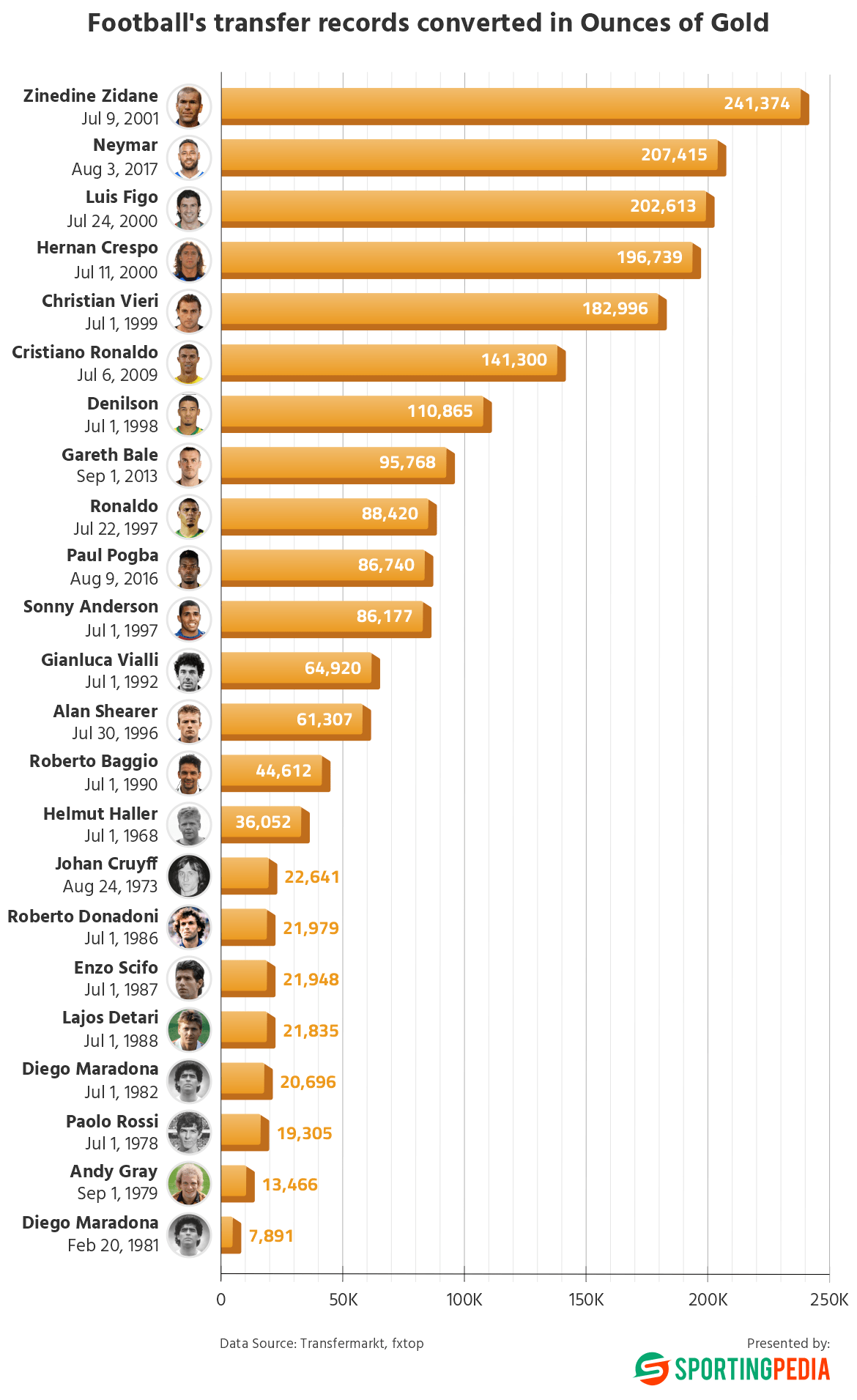In the world of football, the connection between gold and the sport is profound and deeply symbolic. The Ballon d’Or, which translates to “Golden Ball” stands as the most prestigious individual accolade, awarded annually to the best performing player globally. But the affinity with gold doesn’t stop there. Other major football honours, such as the Golden Boot for top goalscorers and the Golden Glove for the best goalkeepers, further solidify the bond between this precious metal and the beautiful game.
Historically, gold played a critical role in backing currencies, a testament to its enduring value and significance. While it no longer underpins our monetary systems, gold remains a symbol of excellence, with gold medals awarded to the best athletes around the world. In football, this symbolism is nearly unmatched, with numerous individual awards named after gold, underscoring its timeless association with greatness.
With each passing day, as the price of gold reaches new heights, we at Sportingpedia found ourselves pondering an intriguing question: how would football’s record transfers look if they were measured not in euros or dollars, but in ounces of gold and silver? It is common knowledge that the peak in football transfers was Neymar’s sensational move from Barcelona to Paris Saint-Germain in the summer of 2017 for €222 million ($263 million). It still holds the crown as the most expensive football transfer in history, but what happens when we convert that fee into the timeless currency of precious metals?


It turns out that when adjusted for the price of gold on the day of the transfer, Zinedine Zidane’s $65.6 million move to Real Madrid in 2001 emerges as the true heavyweight. Back in 2001, that fee translated into a staggering 241,374 ounces of gold – far surpassing Neymar’s 207,415 ounces, despite the Brazilian’s transfer fee being nearly three times higher in nominal terms.
The journey into this alternative valuation reveals even more curiosities. Seven of the top transfer records – when converted to gold – are valued at more than 100,000 ounces. These deals stretch from 1998 to 2017, painting a vivid picture of how the football transfer market has evolved. Yet, some of the biggest transfers in recent history, like Paul Pogba’s return to Manchester United in 2016 and Gareth Bale’s move to Real Madrid in 2013, surprisingly fail to hit the 100,000-ounce mark. Despite their eye-watering price tags, they fall short when viewed through the golden lens.
But silver, often the more volatile cousin of gold, tells a different story. Here, Neymar regains his title as the most valuable player. His transfer, when converted to silver, surpasses Zidane’s by nearly 400,000 ounces. However, what’s truly striking is that only four transfers in football history have crossed the 10 million ounce threshold when valued in silver, underscoring the metal’s fluctuating nature.
The historical perspective adds yet another layer of intrigue. Take Helmut Haller’s move to Juventus in 1968, a time when gold was priced at a mere $39.31 per ounce. Haller’s $1,417,208 million transfer was valued at 38,169 ounces of gold. Fast forward to 1979, when Andy Gray’s $4 million transfer to Wolverhampton shattered previous records, but the skyrocketing gold price – $300 per ounce – meant that Gray’s transfer was worth just 13,466 ounces of gold, a mere 37% of Haller’s value in gold a decade earlier. Even as fees soared, the value in gold often told a different story.
Reflecting on this, one cannot help but recall J.P. Morgan’s famous words: “Gold is money. Everything else is credit.” Karl Marx’ observation, “Although gold and silver are not by nature money, money is by nature gold and silver” resonates here as well. The transformation of these football transfers into ounces of precious metals offers a unique insight into the real value behind the numbers, challenging us to rethink how we view the economic impact of these record-breaking deals.
